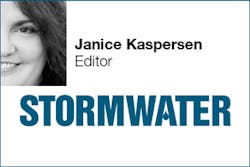Just in time for the Fourth of July weekend, Florida’s governor declared a state of emergency for four coastal counties. The cause this time wasn’t a hurricane, but something much more insidious: algae blooms so thick that some residents compared them to guacamole floating on the water’s surface.
Many people living along the state’s Atlantic coast either stayed indoors or left town to avoid the stench; some who had boats docked in the area moved them to get them away from the slime. On Saturday, hundreds of demonstrators showed up on Stuart Beach bearing signs that said “Buy the Land,” encouraging the state to purchase thousands of acres in the Everglades Agricultural Area, which they say would alleviate the problem.
The polluted water that’s causing the algae blooms comes from Lake Okeechobee, which in turn receives runoff from agricultural lands to the north. To keep the lake level low enough to avoid flooding during hurricane season, and to relieve pressure on the aging and structurally unsound Herbert Hoover Dike that surrounds part of the lake, the US Army Corps of Engineers releases a certain amount of water, which carries high levels of nutrients from fertilizers and livestock manure. The polluted water flows to the St. Lucie and Caloosahatchee estuaries and other waterways in the southern part of the state, eventually resulting in the algae blooms.
It’s not the first time the problem has occurred, but residents say it’s worse this year than in the past. There is a high price to pay in lost tourism dollars. “This town is 100% driven by tourism,” one local is quoted as saying in this CNN article. “You go to the beach and it’s the height of summer, and we have empty beaches, empty restaurants, empty hotels.”
A New York Times article last week explained the state’s failed plan to purchase about 47,000 acres from agricultural giant US Sugar Corporation last year; the land would have served as a reservoir for the water that is being released from the lake.
This article from Stormwater provides some history of the dead zones in the Gulf and the process of eutrophication.
StormCon Is Seeking Moderators
If you plan to attend the StormCon conference in Indianapolis, August 22–25, consider stepping up to moderate one or more of the technical sessions. The full conference program is now online, and many 60- and 90-minute sessions are still available. Contact me ([email protected]) or Brigette Burich ([email protected]) for more information or to reserve a session.
About the Author
Janice Kaspersen
Janice Kaspersen is the editor of Erosion Control and Stormwater magazines. She works with experts throughout the erosion and sediment control industry and the stormwater industry to produce articles relevant to professionals working in both of these fields. Topics covered regularly in the magazines include best management practices for erosion control and stormwater management; green infrastructure, such as bioswales, rain gardens, pervious pavement, and rainwater harvesting systems, as a supplement to traditional “gray” infrastructure; stormwater management and erosion and sediment control techniques for construction sites; urban retrofit and redevelopment; and the many evolving Clean Water Act regulations. She has researched and written articles on topics ranging from coastal erosion to stormwater program funding.
Janice also puts together the speaker program portion of Forester Media’s StormCon, the North American Surface Water Quality Conference and Exposition, which is in its fourteenth year. The annual StormCon conference brings together surface water professionals, engineers, municipal program managers, researchers, regulators, and others concerned with water quality. Conference program tracks include Best Management Practices, Green Infrastructure, Stormwater Program Management, Water-Quality Monitoring, Advanced Research, and Industrial Stormwater Management.
Before joining Forester Media, Janice worked as a technical writer and editor for a government research laboratory. She has a degree in English and anthropology from the University of Arizona. She holds a certification from the Board of Editors in the Life Sciences.
